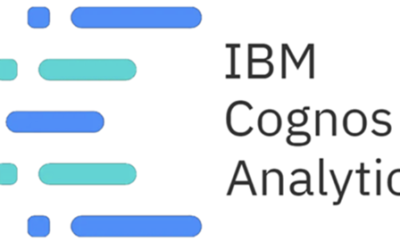It’s Good to Have High Standards!
More than occasionally, I work in data warehouse environments where there have been very loose standards when it comes to creating physical data models. One example of this is delivering dimensions and facts without surrogate keys, and delivering 'attributes' directly...
High Impact Analytics Done Well.
Creating a successful solution is a partnership between business users and IT, with the right team and close collaboration. With a knowledgeable architect, a flexible process with rapid iteration, the right platform and tools you can make analytics applications that have impact.
The #1 Problem I see: Data Modeling
I have worked as a hands-on consultant, data architect, data engineer and analytics solution architect for more than 25 years, and the problem I see more than any other is data modeling. This problem is significant because it creates difficulty throughout the solution...
Good Bye Data Modeling Tools
Data modeling tools are just dumb and they don’t fit into data engineering workflows anymore. And they're expensive. Well, at least when it comes to analytics using dbt and Snowflake. Imagine you’re doing the work of a data engineer, you developed a model in dbt, but...
Integers Still Rule
Integers still rule. There is a little debate or controversy regarding the right approach for assigning surrogate keys, assuming, of course you’re not mired in the debate whether or not to create data models in the first place. I guess if you aren’t creating data...
Software will not save you. AI will not save you. Thinking and effort is still required.
Over the years I have seen a number of clients try to buy something to solve their analytics challenges. When I worked for Cognos, people bought Cognos thinking it would fix things, sometimes they threw Cognos out thinking it was the problem. Companies have purchased...
Modern Data Stack Platform Architecture
The following is an overview of the platform architecture used to facilitate the process of ingesting data into the Snowflake platform and transforming it into data models to facilitate a wide variety of reporting and analytics. I recently developed this with a client and felt that the general information would be useful to others going down the path of exploring and adopting tools and platforms like Snowflake, Fiveran and dbt.
Realtime Reporting and Analytics from UKG Autotime
The range of reporting and analytics that you need from UKG Autotime is broad enough to cause fits. You need real-time reporting to manage operations and more sophisticated analytics in order to manage performance and improve operations over time. In the past, this meant compromise. Operational reporting and analytics were separate and disconnected, performance was lousy, and lacked the detail needed to understand what was happening with confidence to make changes. Here is one solution based on a new approach enabled by the modern data stack.
Cognos Security Design Best Practices
A good design and approach to Cognos security can really help make your life easier. A well run and efficient model can make a software license audit a breeze, and can make day to day administration a task you don’t even notice. We have helped many clients implement security in Cognos and this is what we have learned. This will result in a Cognos implementation that performs well, is simple and intuitive to use for a variety of user profiles, and as a result maximizes user adoption and is easier to administer and maintain.
I have been a practitioner of the “Kimball Methodology” for more than 20 years, so naturally, when I received this provocative email, I had to go and read the “ebook”. Those who know me know I am opinionated, and when something fires me up, I like to offer my opinion, so here it is.
Thanks Mr. Dolley!
I’ve seen my share of missed opportunities. However, given the right approach, Analytics can be very effective, and very successful. I want to share this insight with you. It is only very rarely the profound and dramatic insight leading to massive change and impact we dream it should be. It starts with the business and it’s usually pretty simple. What are the key drivers of the performance you’re trying to manage and how can you manage them? Because this seems so boring, it seldom inspires the effort to get started and stick with it. It also starts with the business, not some new tool or technology that will solve every problem. And management talent seems hard to find some days.
There is a Better Way.
Many organizations, of all sizes, struggle to use analytics to improve their operations because of information “silos”. Silos occur when the applications that run different parts of your operations can’t communicate with each other. You know you have a silo problem when you are unable to answer simple questions behind the reports. In some ways, the rise of cloud applications has made this worse because access to the data is different than it used to be.








